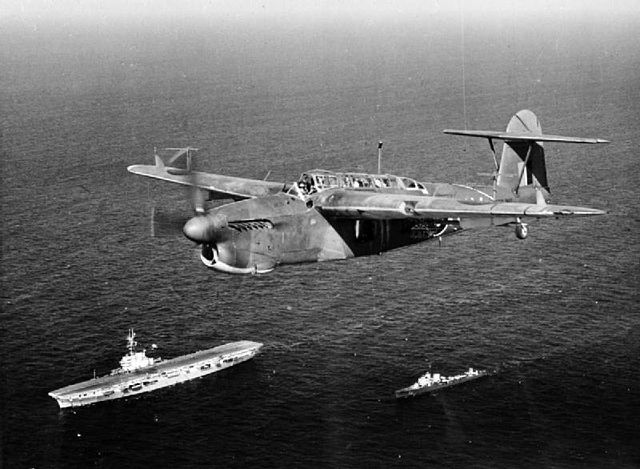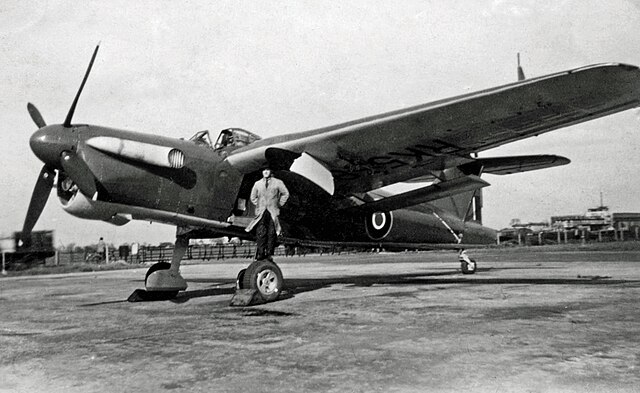The Fairey Barracuda was a British carrier-borne torpedo and dive bomber designed by Fairey Aviation. It was the first aircraft of this type operated by the Royal Navy's Fleet Air Arm (FAA) to be fabricated entirely from metal.
Fairey Barracuda
Barracuda Mk II carrying an 18-inch (46 cm) aerial torpedo. The ASV radar "Yagi" antennae are visible above the wings.
A Barracuda Mk. V; notice the squared off wing tips and the enlarged radiator and spinner for the Griffon engine. The lack of the larger fin and wing radar pod suggests that this is the prototype.
Stockport-built Barracuda V with final enlarged pointed fin at Ringway in May 1946
A torpedo bomber is a military aircraft designed primarily to attack ships with aerial torpedoes. Torpedo bombers came into existence just before the First World War almost as soon as aircraft were built that were capable of carrying the weight of a torpedo, and remained an important aircraft type until they were rendered obsolete by anti-ship missiles. They were an important element in many famous Second World War battles, notably the British attack at Taranto, the sinking of the German battleship Bismarck, the sinking of the British battleship HMS Prince Of Wales and the British battlecruiser HMS Repulse and the Japanese attack on Pearl Harbor.
A Fairey Swordfish carrying a dummy torpedo
A formation of Fairey Barracudas during World War II
Short Folder 81 being hoisted aboard the cruiser HMS Hermes
A Sopwith Cuckoo dropping an aerial torpedo during World War I








